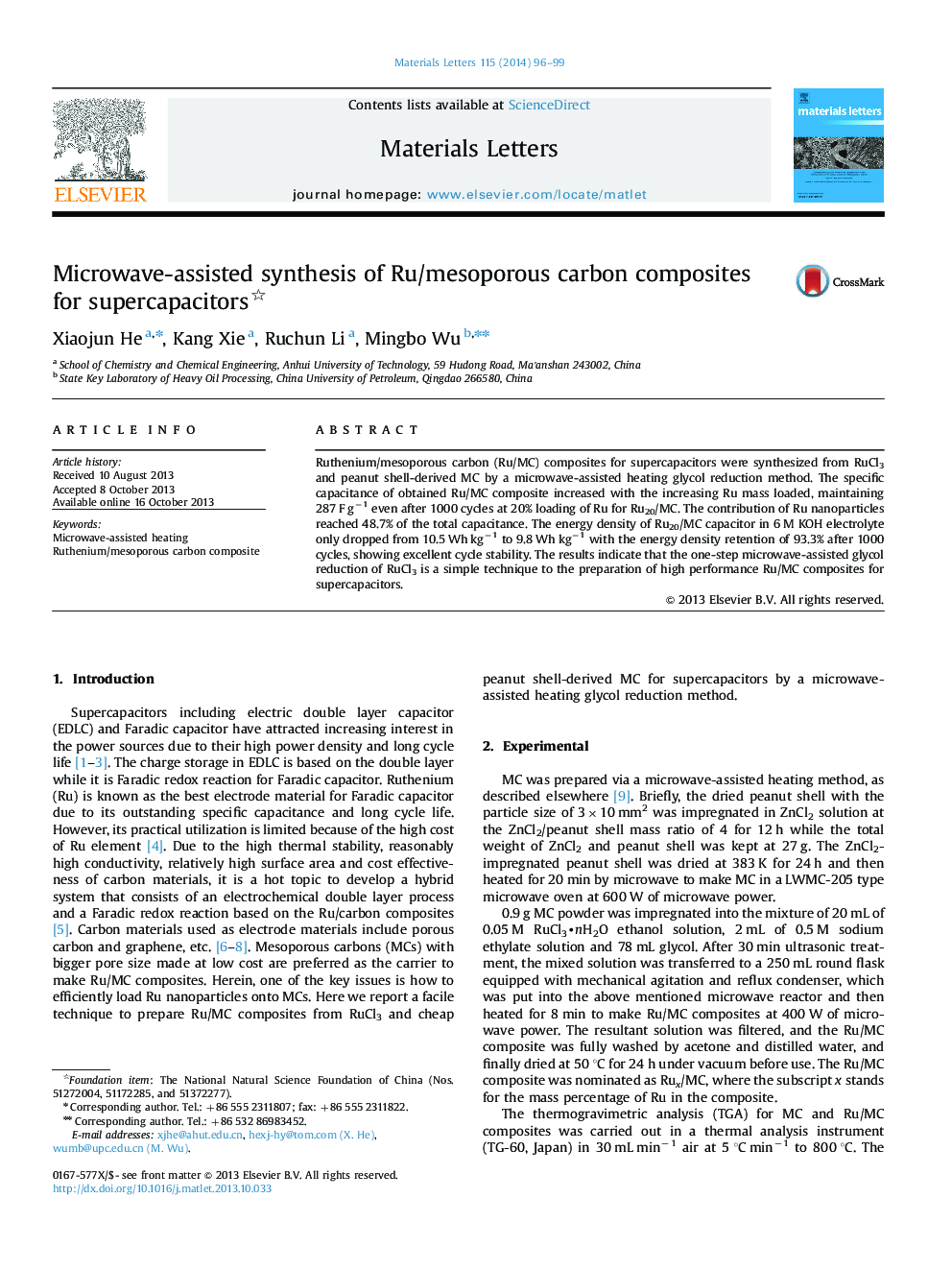| Article ID | Journal | Published Year | Pages | File Type |
|---|---|---|---|---|
| 1644768 | Materials Letters | 2014 | 4 Pages |
•Ruthenium/mesoporous carbons (Ru/MCs) are synthesized by a simple method.•The specific capacitance of Ru/MC electrode retains 287 F g−1 after 1000 cycles.•The contribution of Ru nanoparticles reaches 48.7% of the total capacitance.•The Ru/MC supercapacitors show excellent cycle stability.
Ruthenium/mesoporous carbon (Ru/MC) composites for supercapacitors were synthesized from RuCl3 and peanut shell-derived MC by a microwave-assisted heating glycol reduction method. The specific capacitance of obtained Ru/MC composite increased with the increasing Ru mass loaded, maintaining 287 F g−1 even after 1000 cycles at 20% loading of Ru for Ru20/MC. The contribution of Ru nanoparticles reached 48.7% of the total capacitance. The energy density of Ru20/MC capacitor in 6 M KOH electrolyte only dropped from 10.5 Wh kg−1 to 9.8 Wh kg−1 with the energy density retention of 93.3% after 1000 cycles, showing excellent cycle stability. The results indicate that the one-step microwave-assisted glycol reduction of RuCl3 is a simple technique to the preparation of high performance Ru/MC composites for supercapacitors.
Graphical abstractRuthenium/mesoporous carbon (Ru/MC) composites prepared by a microwave-assisted heating glycol reduction method show high capacitance as supercapacitor electrodes in 6 M KOH aqueous electrolyte.Figure optionsDownload full-size imageDownload as PowerPoint slide
